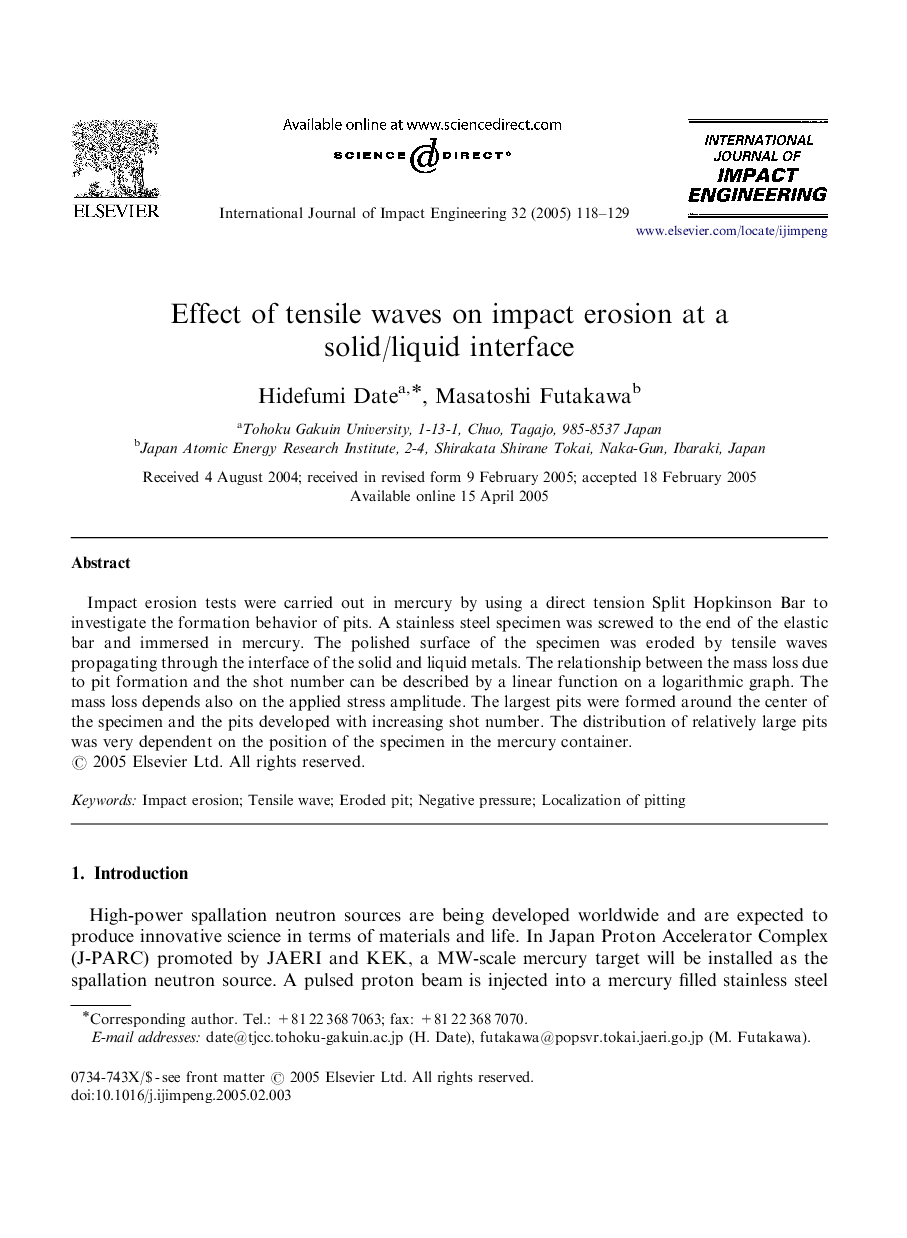| Article ID | Journal | Published Year | Pages | File Type |
|---|---|---|---|---|
| 9704645 | International Journal of Impact Engineering | 2005 | 12 Pages |
Abstract
Impact erosion tests were carried out in mercury by using a direct tension Split Hopkinson Bar to investigate the formation behavior of pits. A stainless steel specimen was screwed to the end of the elastic bar and immersed in mercury. The polished surface of the specimen was eroded by tensile waves propagating through the interface of the solid and liquid metals. The relationship between the mass loss due to pit formation and the shot number can be described by a linear function on a logarithmic graph. The mass loss depends also on the applied stress amplitude. The largest pits were formed around the center of the specimen and the pits developed with increasing shot number. The distribution of relatively large pits was very dependent on the position of the specimen in the mercury container.
Keywords
Related Topics
Physical Sciences and Engineering
Engineering
Mechanical Engineering
Authors
Hidefumi Date, Masatoshi Futakawa,
